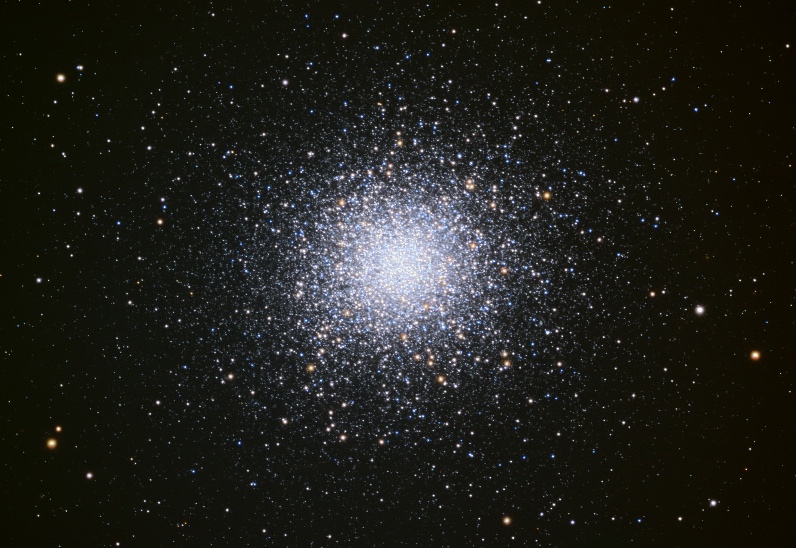Hercules Cluster

The Hercules Globular Cluster, also known as M13, is one of the most impressive sights in the night sky. Located in the constellation of Hercules, it is approximately 145 light-years in diameter and contains hundreds of thousands of stars.
M13 was first discovered in 1714 by a telescope maker named Edmond Halley, but it wasn't until 1764 when astronomer Charles Messier added it to his catalog of celestial objects. In 1974, M13 gained further notoriety when it became the target of the first deliberate message from Earth to extraterrestrial intelligence, as part of the Arecibo message.
The stars in M13 are some of the oldest known, with an estimated age of around 11.65 billion years. The cluster also contains several variable stars, including at least 21 pulsars, which are stars that emit regular pulses of electromagnetic radiation.
M13 is a popular target for amateur astronomers, as it can be observed with binoculars or a small telescope. It is also a favorite of professional astronomers, who study it to gain insights into star formation, stellar evolution and the structure of the Milky Way.
Overall, the Hercules Globular Cluster is a fascinating and awe-inspiring subject of astronomical study that continues to captivate both professional and amateur stargazers alike.

